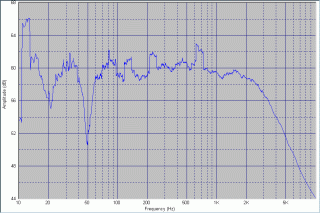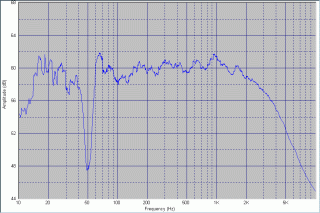The Bottlehead Paraglow
The Bottlehead Paraglow is an audio power amplifier, but it's not just any amplifier, its a valve amplifier.
But its not just any valve amplifier, it's a pair of single ended triode monoblock power amplifiers.
But not just any pair of single ended triode monoblocks but direct coupled parafeed single ended monoblocks using the delicate and detailed 2A3 output valve.
Impressed yet? In the first half of 2000 I bought the kit and built a pair.
Do I now posess the key to audio nervana?
Well, not quite, read on and learn more.
Here is an article I wrote immediately after getting the paraglow running, but written before they achieved their current state of modification. The article was written for the newsletter of the London DIY Hi-Fi Circle. If you live in or near London and are interested in this type of thing, consider joining us.
If you have read the article linked in the previous paragraph you may by now realise I was not greatly impressed by the paraglow while building them. However I have to say that the Bottlehead people were a great help in sorting out the problems. When it comes to valve amp kits there is a lot of choice, but having a support group like the
So what is my considered opinion of the paraglow after living with them for some months? One gripe I have with Hi-Fi in general is the variability in how it sounds. Sometimes it sounds lousy and at other times it sounds great. With my previous transistor amp there was a general improvement the longer the amp was left on. My immediate reaction to the paraglow at switch on is that they sound good, they then improve to the point were they sound 'right' but they then go past that point and loose it again.
Early in 2002 I got round to testing the paraglow using Speaker Workshop, a free package available from www.audua.com. These are the resulting frequency responses for both monoblocks, click on either to view a larger version (25kB). The tests were made using a 10 ohm resistive load, the input level was ≈ ±0.5V with ≈ 10:1 attenuation of the output signal. The graphs have ¼ octave smoothing applied and are truncated to omit the portion below 10Hz and above 10kHz.
It has to be said that these results are not considered normal for paraglows with Doc B saying
"I generally see a 1dB down point at 26Hz and 47 kHz and flat response in between when measured running onto a static non-inductive load."
and Greg R saying
"Mine have a very flat response... the highs are very clean, fast, and extended. The bass is the fastest most tuneful bass I have heard, and I prefer it to any soild state amp I have heard."
However the results go some way towards explaining why I was disappointed with the sound of the paraglows as described in the article above. I have no idea why my paraglows differ from the norm and obviously have some more investigation to do to find the cause.
Last modified: Thu Apr 25 11:32:03 GMT Daylight Time 2002

